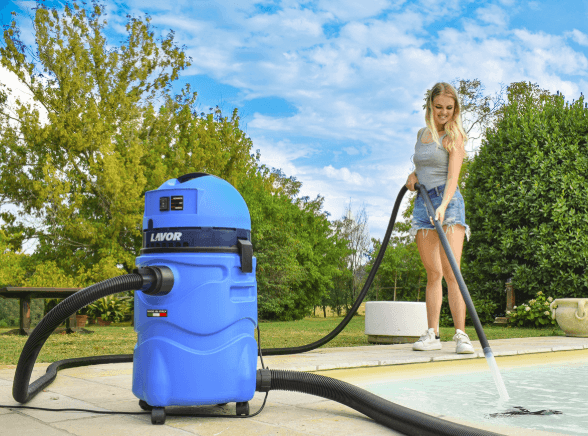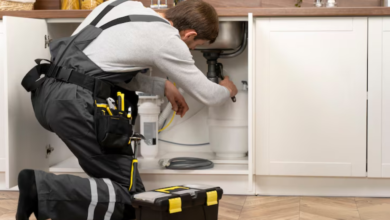How to Choose the Right Swimming Pond Vacuum for a Cleaner Water Experience

Creating and maintaining a healthy, beautiful swimming pond requires more than plants and aesthetics; it relies heavily on the equipment beneath the surface. Among the most important tools is a swimming pond vacuum, which plays a vital role in keeping the water clear, free of debris, and safe for swimmers and aquatic life alike.
Whether your pond serves as a relaxing retreat, a koi-filled ecosystem, or a backyard showpiece, choosing the correct vacuum makes all the difference in cleanliness and enjoyment. This guide walks you through everything you need to know to confidently select the best vacuum for your swimming pond.
Know the Demands of Your Pond First
Before investing in any cleaning equipment, start by assessing the unique features of your pond. The total volume of water, presence of fish (especially koi), nearby foliage, and type of liner all influence the kind of vacuum you’ll need.
For example, swimming ponds with a large surface area or a natural regeneration zone tend to accumulate more organic matter, requiring a more powerful and durable vacuum system. If your pond holds 10,000 liters or more, a basic model simply won’t deliver long-term results.
Calculate Pond Volume Accurately
To calculate pond volume in gallons:
Length (ft) × Width (ft) × Average Depth (ft) × 7.5 = Gallons
A precise volume helps determine the appropriate suction power and tank capacity needed. Larger bodies of water often demand continuous or high-capacity vacuums to prevent sediment buildup.
Submersible vs. External Vacuums: Which Is Better?
Swimming pond vacuums typically come in two types—submersible and external—and each has its pros depending on your setup and preferences.
Submersible Vacuums
These sit directly inside the pond and are ideal for small to medium ponds. They are:
- Easy to use and store
- Good for spot-cleaning
- Generally quieter
However, they may lack the power or tank size for frequent use in larger ponds.
External Vacuums
Mounted outside the pond, external models offer:
- Greater suction strength
- Higher debris capacity
- Better suited for continuous or large-area cleaning
They may require more plumbing and space but pay off in long-term performance and durability.
Determine What Needs to Be Cleaned
Swimming pond vacuums aren’t one-size-fits-all. Your cleaning needs may range from fine silt to fallen leaves or sludge. Each type of debris calls for specific vacuum features.
- Sludge vacuums come with strong suction and sludge bags for heavier, deep-set waste.
- Leaf vacuums include wider nozzles and debris collection baskets.
- Multi-function vacuums let you switch between attachments depending on the task at hand.
If your pond is in a wooded area or has heavy fish traffic, prioritize a vacuum that handles solid waste efficiently and doesn’t clog easily.
Evaluate Performance Ratings and Flow Power
The efficiency of a swimming pond vacuum is primarily measured in terms of suction power (usually liters per minute or gallons per hour) and motor wattage. But don’t just focus on numbers—consider how they translate to real usage.
- Motor Power: A higher wattage generally means better suction, especially for heavy debris.
- Flow Rate: Look for adjustable suction speeds so you can clean delicate zones like regeneration beds without disturbing plants or gravel.
When in doubt, go for slightly more power than you think you need—it’ll handle peak loads better and save you time during cleaning.
Portability and Ease of Use Matter
Nobody wants a bulky machine that’s hard to maneuver around the pond’s edge. Lightweight, wheeled vacuums are easier to drag around and store when not in use.
Additional user-friendly features to look for:
- Telescopic suction wands
- Transparent intake tubes (to see when debris is picked up)
- Automatic fill and drain cycles
- Ergonomic handles
These small details often make a big difference when it comes to hassle-free operation.
Noise and Energy Use: Don’t Ignore the Quiet Contributors
If your pond is a relaxation space, you likely won’t enjoy the sound of a loud motor interrupting the serenity. Some high-performance vacuums run surprisingly quietly. Check decibel ratings if this is important to you.
Energy-efficient motors also reduce long-term electricity costs—especially if you vacuum frequently or own a large pond. Advanced models now offer automatic shut-off features to save power when idle.
Maintenance, Filters, and Long-Term Reliability
Routine cleaning and filter changes are part of pond care. Choose a vacuum with easily removable filters and accessible maintenance parts.
Here’s what to check before buying:
- Washable vs. disposable filters
- Clog-resistant intake nozzles
- Availability of replacement parts
- Warranty coverage
Brands known for durable construction—such as Oase and Pondovac—often include extended warranties and stronger build materials like stainless steel tanks or reinforced hoses.
When One Isn’t Enough
In some large or complex pond setups, one vacuum may not be enough. If you have multiple zones (e.g., a swimming area, a wildlife zone, and a filtration marsh), you might benefit from owning two devices—one for surface work and one for deep cleaning.
Alternatively, look for models with dual functionality or multiple attachments to handle different parts of your pond without having to invest in a second machine.
Think Beyond the Purchase
The best vacuum is one that works well for you—your schedule, your pond’s needs, and your maintenance style. Consider not only how well the vacuum performs today but how it will hold up over multiple seasons. Does the brand offer ongoing support? Can you easily replace accessories?
Often, paying a bit more upfront leads to long-term savings and fewer headaches.
Final Reflections on Clean Water Success
A swimming pond is more than a water feature—it’s an experience, a sanctuary, and sometimes a personal achievement. Keeping it clean should never feel like a chore. With the right swimming pond vacuum, you gain more time to enjoy your outdoor haven and less time wrestling with sludge or algae.
Make the decision thoughtfully. A well-chosen vacuum leads to a healthier ecosystem, safer swimming conditions, and less overall maintenance.
Clearing Up Confusion
Can I use a regular pool vacuum in a swimming pond?
No. Regular pool vacuums aren’t built for natural debris like algae, leaves, or sediment found in swimming ponds.
How often should I vacuum my swimming pond?
Depending on pond size and location, once a week to once a month is typical. Heavily planted or fish-filled ponds may require more frequent cleaning.
Do vacuums harm aquatic plants or fish?
When used properly with adjustable suction settings and soft nozzles, swimming pond vacuums are safe for plants and fish.
What’s the difference between suction power and flow rate?
Suction power refers to the strength at which water and debris are pulled in; flow rate indicates how much water is moved per minute or hour.
Is manual or automatic vacuuming better?
Manual vacuums offer more control, while automatic models save time. The best option depends on your pond’s size and your availability.




